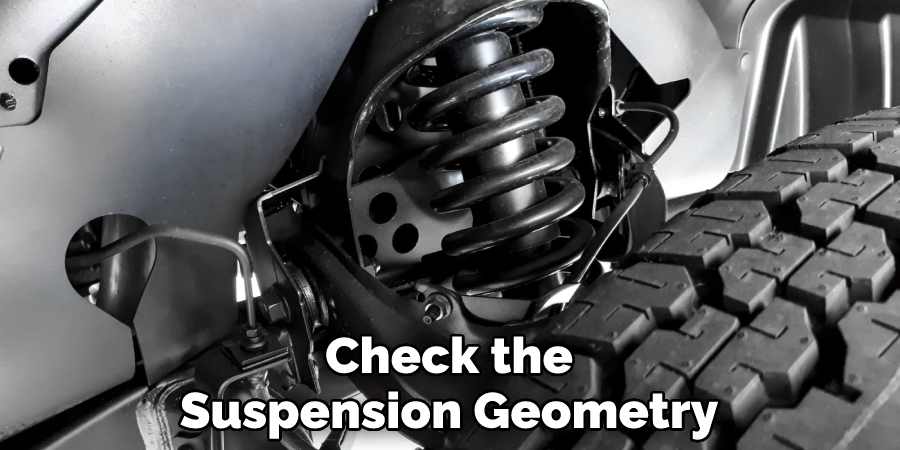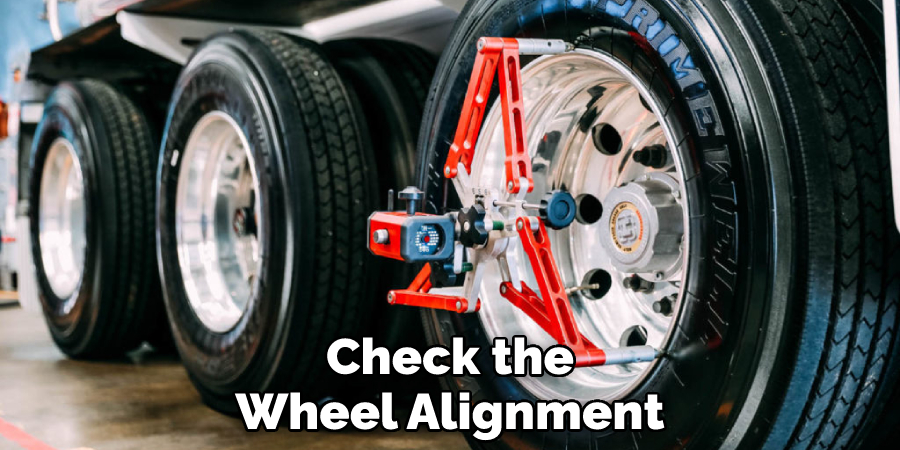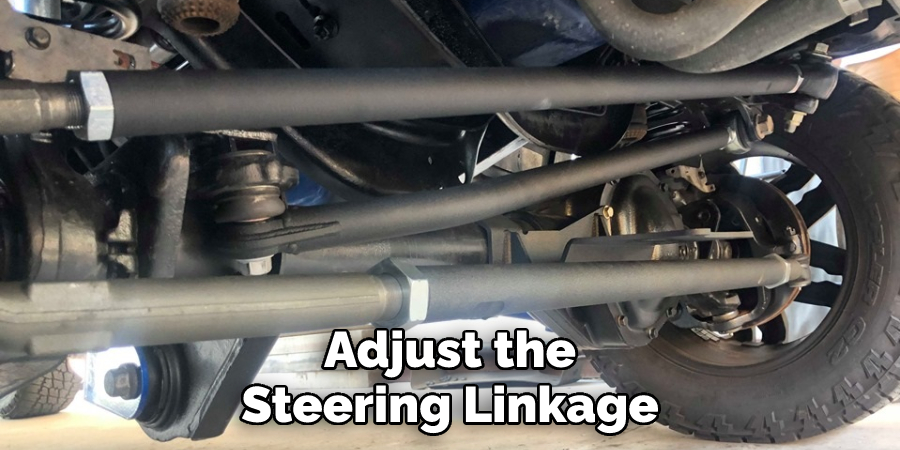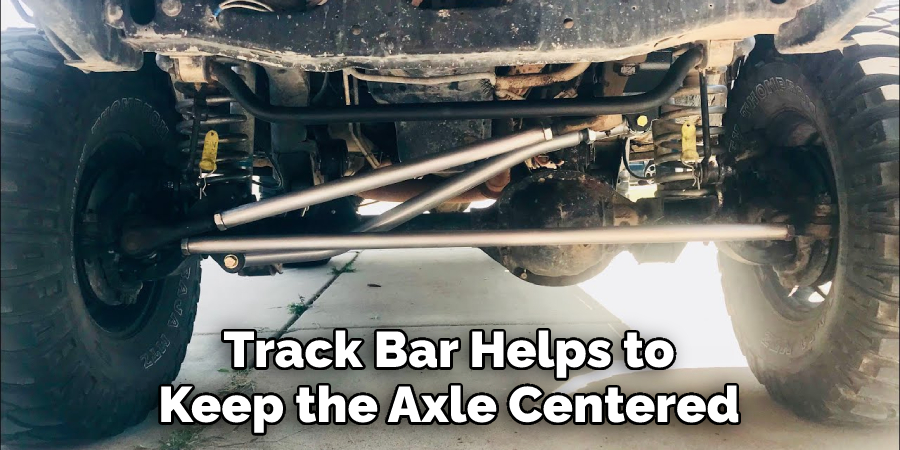Imagine driving your lifted truck on a beautiful, sunny day. The wind is blowing in your hair, the sun shining on your face. You take a corner and suddenly feel like you’re being steered off the road. What’s going on? You may have a bump steer. Bump steer is a phenomenon that affects lifted trucks and can cause all sorts of problems, from steering difficulty to loss of control.
This post will explain bump steer and how to fix it. Bump steer can be a major issue on lifted trucks. Improperly fixed can lead to poor handling and dangerous driving conditions. In this post, we’ll show you how to fix bump steer on lifted truck using simple methods that are easy to follow.

Summary: Bump steer is a phenomenon that affects lifted trucks, wherein their steering wheel and suspension parts become misaligned. This can cause the truck to drift or pull in an undesired direction while driving. Fixing bump steer requires adjusting the toe-in angle, caster angle, and other angles of the truck’s steering components. Doing so leads to improved handling, steering feel, and overall performance of the vehicle.
What Causes Bump Steer Lifted Truck?
Bump steer is caused by the suspension geometry of a lifted truck. When the suspension is raised, the angle of the steering linkage changes about the ground. This can cause the vehicle to steer itself or “bump” into objects. If your truck has excessive bump steer, you may find it difficult to keep the vehicle going in a straight line or that it wanders from side to side.
There are several ways to fix bump steer on a lifted truck. One method is to install a steering damper. This will help to absorb some of the shock and vibration that can cause bump steer. Another method is to adjust the suspension geometry. This can be done by either changing the suspension components or adjusting the wheels’ alignment.
Step by Step Guide: How to Fix Bump Steer on Lifted Truck
Step 1: Check the Suspension Geometry.
The first step is to check the suspension geometry. This can be done by changing the suspension components or adjusting the wheels’ alignment. If the suspension geometry is incorrect, it can cause the wheels to point in the wrong direction when they hit a bump. This can lead to the vehicle veering off course or even flipping over.

Step 2: Check the Tire Pressure.
The next step is to check the tire pressure. If the tires are not inflated properly, they will not be able to grip the road correctly. This can lead to the vehicle slipping and sliding on the road, which can be dangerous. If your tires are not correctly inflated, you need to inflate them to the proper pressure.
Step 3: Check the Wheel Alignment.
The third step is to check the wheel alignment. If the wheels are not aligned correctly, they will not point in the same direction. This can lead to the vehicle veering off course or even flipping over. If your wheels are not aligned, you will need to have them aligned by a professional.

Step 4: Check the Suspension Components.
The fourth step is to check the suspension components. If any of the suspension components are worn or damaged, they will not be able to support the vehicle properly. This can lead to the vehicle sagging or even collapsing. If your suspension components are damaged, you will need to replace them.
Step 5: Check the Brakes.
The fifth step is to check the brakes. If the brakes are not working correctly, they will not be able to stop the vehicle correctly. This can lead to the vehicle crashing or even flipping over. If your brakes are not working correctly, you will need to have them repaired or replaced.
Step 6: Check the Steering.
You should check the steering for any signs of wear or damage. If the steering is worn or damaged, it can cause the bump steer to become worse.
If you think the steering is the problem, you can take it to a mechanic to have it checked out.
Step 7: Adjust the Suspension Mounting Points.
If the suspension mounting points are not correct, it can cause the vehicle to steer itself. You will need to adjust the suspension mounting points to ensure they are correct. If your suspension mounting points are not correct, you will need to have them adjusted by a professional. Make sure the vehicle is on a level before starting this step.
Step 8: Adjust the Steering Linkage.
If the steering linkage is not correct, it can cause the vehicle to steer itself. Therefore, you will need to adjust the steering linkage to ensure it is correct. If your steering linkage is not correct, you will need to have it adjusted by a professional.

Step 9: Adjust the Wheels.
If the wheels are not pointing in the right direction, it can cause the vehicle to steer itself. You will need to adjust the wheels to ensure they are pointing in the right direction. If your wheels are not pointing in the right direction, you will need to adjust the suspension.
Step 10: Check the Alignment.
If the vehicle is not aligned properly, it may cause the tires to scrub when turning. This will create a bumping sensation as the wheels try to find their way back to the center. To check if the vehicle is aligned correctly, take it for a short test drive and pay attention to how it feels when making turns. If the vehicle seems to wander or pull to one side, it likely needs an alignment. Many times, a 4-wheel alignment is needed after lifting a vehicle to ensure proper tire contact with the ground.
Step 11: Check the Ball Joints.
If the ball joints are worn, they can cause the suspension to bind, which will lead to bumping steer. To check the ball joints, jack up the vehicle and grab hold of the tire at 12 o’clock and 6 o’clock. Try to move the tire in and out, up and down. If there is any play in the ball joint, it needs to be replaced.
Step 12: Check the Tie Rod Ends.
Like the ball joints, worn tie rod ends can cause the suspension to bind, leading to bump steer. To check the tie rod ends, jack up the truck’s front end and grab each tire at the 12 and 6 o’clock positions. Try to move the tire back and forth, and if you feel any play, the tie rod ends need to be replaced.
Step 13: Check the Track Bar.
The track bar helps to keep the axle centered under the vehicle. However, if it’s not installed properly or damaged, it can cause the axle to shift to one side or the other. This will cause the vehicle to pull to one side or the other when you turn the steering wheel. To check the track bar, first, make sure that it’s securely mounted at both ends. Then, check the bushings to make sure they’re in good condition. If the track bar is damaged or the bushings are worn out, it will need to be replaced.

Some Helpful Tips and Advice
- Inspect your suspension regularly. Check for damaged or worn components, and make repairs or replacements as needed.
- Be sure to use quality aftermarket parts when upgrading or to replace components on your lifted truck.
- Always have a professional align your vehicle after making any changes to the suspension.
- Make sure that the tires on your lifted truck are the correct size and type for the vehicle.
- Drive carefully and avoid obstacles that could cause damage to your suspension components.
- Regular maintenance and care will help to keep your lifted truck in good condition and minimize the risk of a bump steer.
Following these tips can help ensure that your lifted truck has minimal bump steer issues. However, if you do experience any problems, be sure to have a professional check it out as soon as possible.
Will an Alignment Fix Bump Steer?
Technically, yes. A wheel alignment will fix the bump steer. However, it’s important to understand that a wheel alignment by itself will not necessarily fix all the underlying issues that are causing your vehicle to experience bump steer in the first place. A few things can cause a vehicle to experience bump steer, but the most common cause is a change in the ride height of the vehicle.
If you lift your truck, for example, the suspension components’ geometry has changed, which can lead to bumping steer. The same is true if you have lowered your vehicle. In both cases, the changes in ride height can lead to changes in the angle of the suspension components, which can lead to bumping steer.
Frequently Asked Questions
What Causes Bump Steer Lifted Truck?
A bump steer lifted truck typically occurs when the front or rear wheels of a pickup truck become caught in the front or rear axle, respectively. This can occur when the driver tries to make a turn too quickly, and their weight pushes down on one of the drive axles. As a result, the wheel becomes locked and gravity causes it to rise up off of its hub – similar to how you might lift an object by leaning on it from above.
This type of problem is usually diagnosed through self-diagnosis (via observing your vehicle), but may also require professional inspection if there are any signs of damage. In order for this issue to be resolved, you will likely need to modify either your driving habits or your vehicle’s specifications. If you’re driving normally and something happens that should theoretically cause this kind tree situation not develop (such as changing roads without properly gearing down), then you may want to consider purchasing an extra set of spare tires just in case!
Does Caster Affect Bump Steer?
Caster affects bump steer in two ways – first, it changes the geometry of the tire and suspension system, which can alter how the car handles in turns; and second, caster may change the center of gravity of the car, which can affect how it responds to turns. The latter is usually more significant.
Will Steering Stabilizer Fix Bump Steer?
The effects of a steering stabilizer on bump steer depend on a variety of factors, including the make and model of your vehicle, how much you use your bump steer (if at all), and your driving habits. Ultimately, it is important to talk to an experienced mechanic about whether or not installing a steering stabilizer would be appropriate for your car.
Final Thoughts
Bump steer is a common issue on lifted trucks that can cause problems with steering and handling. The good news is that it’s usually an easy fix. This post has shown you how to fix bump steer on lifted truck. If you’re experiencing issues with bump steer, the first step is determining where the problem is coming from.
Once you’ve determined the source of the problem, it’s usually a simple matter of adjusting or replacing parts to correct it. We’ve walked you through the steps for doing that in this post. Have you ever experienced trouble with a bump steer on your lifted truck? If so, these tips should help you get things back under control.
